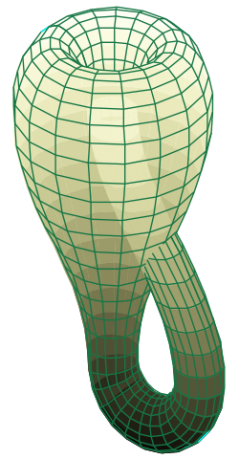So I presented my paper on “Individuals of Play” at CGSA 2013 at U. Victoria earlier this month. Briefly my argument was that play describes the possibility of doing something differently. This is an ontological claim and views cultural play(ludos and paidia) as a subset of the phenomena I am talking about. My ideas stemmed from the writings of Eugen Fink, a German philosopher and phenomenologist, Johan Huizinga and Hans-Georg Gadamer. The idea specifically of play as doing something differently comes from Prof. Bart Simon. The substance of the argument was that the possibility of doing something differently, in the face of a material universe, allows us to be individuals. In humans, play, the possibility of doing something differently, allows us the possibility of individuality. But this means that both art and games arise from this same ontological quality. Humans can do things differently.
Are Games Art?
The question as to whether games are a form of art seems to arouse great passions. I will avoid the sociological approach of ascribing a title to what ever a given group assigns it. perhaps the biggest difficulty is that creating a definition of art that encompasses everything from the cave paintings of Lescaux, to the abstract impressionism of Jackson Pollack and Barnett Newman to “Fontaine”(1917) by Marcel Duchamp. Where do Halo, WoW or other digital games fit into this? We can imagine a circle representing “Art” with a smaller circle that represents games overlapping it. How much of the one would overlap the other?
Art Games
A growing number of game designers frame their work as art. The work of the Kokoromi Collective, and other are examples. In this case, they specifically make games that subvert the conventions of both commercial games and mainstream art. Hacking games to cause them to address ideological concerns, such as Wafaa Bilal’s “Virtual Jihadi” are examples of how games are re-purposed. However, these are again primarily sociological arguments- the designers assert the “art-ness” of their works. They see games as entirely within a gretare art circle.
Art as Game
As I begin to think this through, my thought was that perhaps it is better to consider “Art” in all it’s variegated forms as a subset of games. I reverse the field. The vast circle of games, which exist as a subset of cultural play, in turn begets art as field within it. But while reversal of the perceived relationship of games to art is provocative it fails to allow for the “thickness” of art, play and games. Indeed, these metaphors of fields and circles may not be remotely adequate. Perhaps more dimensions are needed….
Games and the relational aesthetics of genre
Perhaps the breadth of the term art fails to represent the range of possibilities afforded by different genres. Thus we address the concerns of Clement Greenberg, that a genre must be judged in its respect to its medium (A painting best achieves painting-ness when it is supremely flat. Impasto is an aberration) but without having such a didactic approach to artistic media. Like Klein bottles nested within each other, they never fundamentally merge and never separate. Art becomes a word meaning the fluid movement from one genre into another with no clear delineation between one genre and another, yet contingent stops reveal differences along the loops.

